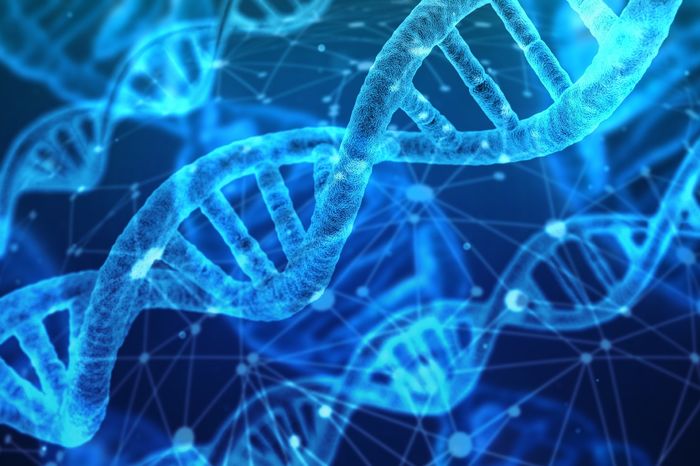Cambridge alumni sweep this year’s Nobel Prizes
Maya Kunchur explains who the prize-winning scientists are, and what they were rewarded for

This year’s Nobel Prizes were recently awarded – but what for? Prizes were awarded for work spanning the sciences, from molecular biology to neural networks. Interestingly, multiple laureates’ work links to machine learning. And who are the three alumni of the University of Cambridge who are recipients?
Nobel Prize in Chemistry – David Baker and Sir Demis Hassabis (alumnus) & John M. Jumper (alumnus)
Baker boasts a lifetime of work in studying and designing proteins. In the 1990s, he helped develop Rosetta, a software which analysed the structure of protein fragments in order to design entirely new proteins which fit a desired shape. In 2003, he synthesised one of the designed proteins in the lab and proved the shape was indeed close to what was predicted.
Hassabis founded DeepMind in 2010, an AI software research laboratory which Google acquired four years later. Alongside Jumper, the director of DeepMind, he’s been very recently in media coverage (including Varsity) for their work on the release of the software AlphaFold3. Sequences of amino acids are encoded in a particular order in DNA. When joined together, they form a protein such as an enzyme, the shape of which is determined by the component amino acid sequence. This award celebrates the ability of AlphaFold to predict the structure of a protein based on only the input amino acid sequence with unprecedented accuracy.
“This award celebrates the ability of AlphaFold to predict the structure of a protein based on only the input amino acid sequence”
Hassabis completed his undergraduate degree at Cambridge: he read Computer Science at Queen’s College in the 1990s, and was awarded an honorary fellowship at the college in 2014. He was also a chess prodigy from a young age and was awarded a Half Blue for representing Cambridge in the Varsity chess match three years in a row. The American computer scientist Jumper completed an MPhil in theoretical condensed matter physics at Cambridge a decade or so later.
Nobel Prize in Physics - John J. Hopfield & Geoffrey E. Hinton (alumnus)
Hopfield pioneered the Hopfield Network – a neural network which is used in machine learning to ‘remember’ patterns, as well as recreate them from an incomplete input. It relies on the physics principle of atomic spin.
Hinton attended King’s College in Cambridge in the 1960s and changed degree multiple times, including between Natural Sciences, History of Art and Philosophy. He eventually graduated with a BA in Experimental Psychology, proving Cambridge students don’t need to have their life planned out! He used the Hopfield network to develop the Boltzmann Machine. This machine uses probability distributions to make decisions and recognise elements of a dataset, and is in part the work which earned Hinton his title, ‘Godfather of AI’.
Nobel Prize in Physiology or Medicine – Victor Ambros & Gary Ruvkun
“Initially, the significance of Ambros’ and Ruvkun’s discovery of miRNA was not recognised by the scientific community”
This Prize was awarded for the discovery of microRNA, or miRNA. miRNA is a class of molecules which are similar in structure to DNA but play roles largely in the regulation of gene expression - determining which genes affect the physical traits of an organism. They bind to a specific length of DNA to upregulate or downregulate the expression of that gene or a nearby one.
As every cell in your body contains the same genetic material, differing expression of genes is what gives cells the ability to specialise – for example, how you have skin cells which are structurally very different to your red blood cells. miRNA plays a huge role in this regulation. Knowledge of it also gives us a better understanding of what might have gone wrong in diseases linked to gene regulation, such as cancer.
Initially, the significance of Ambros’ and Ruvkun’s discovery of miRNA was not recognised by the scientific community as it was assumed to be an odd quirk in the model organism they were investigating: C.elegans (a nematode worm). Only as more miRNAs were found, and in genes conserved across a wide range of species, was the relevance of their discovery to humans and all other organisms realised and now celebrated with their Nobel laureateship.
 News / Cambridge study finds students learn better with notes than AI13 December 2025
News / Cambridge study finds students learn better with notes than AI13 December 2025 News / Cambridge Vet School gets lifeline year to stay accredited28 November 2025
News / Cambridge Vet School gets lifeline year to stay accredited28 November 2025 Science / Did your ex trip on King’s Parade? The science behind the ‘ick’12 December 2025
Science / Did your ex trip on King’s Parade? The science behind the ‘ick’12 December 2025 News / Uni Scout and Guide Club affirms trans inclusion 12 December 2025
News / Uni Scout and Guide Club affirms trans inclusion 12 December 2025 Arts / Modern Modernist Centenary: T. S. Eliot13 December 2025
Arts / Modern Modernist Centenary: T. S. Eliot13 December 2025









